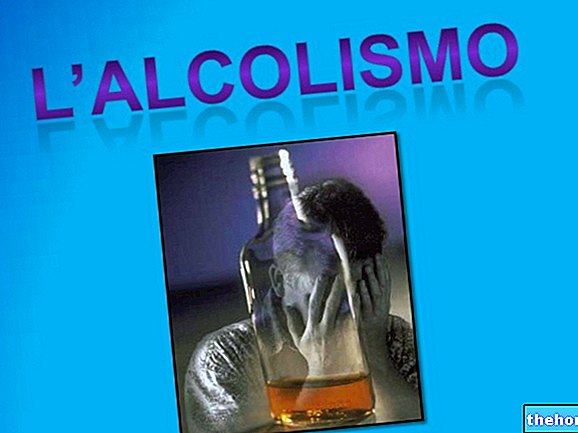So is Vodka
Vodka is a distilled alcoholic drink with a high content of ethanol. It is a spirit that also contains water and, sometimes, small percentages of dyes and flavorings.

The original vodka is made from the distillation of fermented potatoes or grains, although some more modern varieties use different substrates, such as fruit or refined sugar.
Since 1890, thanks to the directives of the Russian chemist Dmitrij Mendeleev, the standard vodka of Russian, Ukrainian, Estonian, Polish, Latvian, Lithuanian and Czech origin must contain an alcohol percentage equal to 40% by volume (80 proof). On the other hand, the European Union (EU) has established a minimum of 37.5% vol. for any vodka (essential feature to fall into this category). The types of vodka sold in the United States of America, on the other hand, have a MINIMUM alcohol content of 40% vol.
Vodka is traditionally drunk neat and often chilled (especially in Eastern European countries bordering the Baltic Sea). It is also commonly used in the formulation of various cocktails and beverages of various kinds, such as: vodka martini, vodka tonic, Screwdriver , Greyhound, Black or White Russian, Bloody Mary and Sex on the Beach.
Watch the video
- Watch the video on youtube
Nutritional Aspects
The "traditional" vodka is a distillate with a minimum alcohol content of 37.5 or 40% vol. This precludes its regular, systematic and frequent consumption; moreover, even assuming a "sporadic intake, the average portion should NOT exceed 40-80ml per day.
Vodka is an "empty" drink, which means that it does not have nutrients useful for health.
Abundant intake of vodka is always contraindicated, not only for the sick, but also for HEALTHY people; this recommendation is especially valid in the case of: growth, pregnancy and breastfeeding.
The diseases that suffer negatively from the intake of vodka are many and of various kinds; among the metabolic ones we mention in particular: hypertension, hypertriglyceridemia and overt metabolic syndrome. At the same time, it seriously damages the tissues of certain organs such as: kidneys , liver and pancreas, aggravating or predisposing to renal and / or hepatic insufficiency, pancreatitis, neoplasms, etc. It should also be remembered that ethyl alcohol is particularly irritating to the mucous membranes, for example that of the esophagus, stomach and intestine, and significantly increases gastric acid secretion. This condition predisposes to the aggravation of idiopathic and non-inflammatory diseases ( such as Crohn's disease and ulcerative rectal colitis) and can also give rise to new ones (colitis with alimentary or mixed etiology and gastritis); these can be accompanied by various types of complications, such as gastric or duodenal ulcer, gastroesophageal reflux and Barrett's esophagus (probably evolving into esophageal cancer).
In sports, vodka should be avoided or, at most, consumed in the appropriate recommended ration. This is justified by the fact that ethyl alcohol favors dehydration due to increased diuresis, a negative aspect as it worsens the hydro-saline balance already compromised by intense sweating. Finally, albeit with a certain variability, alcohol interferes with sleep cycles and does not allow sufficient rest to the central nervous system.
We conclude by specifying that alcohol also interferes in the absorption and metabolism of drugs and that, in the event of abuse, it increases the risk of nutritional malabsorption. Finally, remember that it is also a molecule that favors toxic addiction.
The Vodka that Kills
Although illegal, in some Eastern European countries the production of home-made vodka (called "bathtub") is particularly widespread, as it is tax-free and easily sold at a lower price. However, the uncontrolled distillation of vodka leads to "intake of toxic elements that can cause: intoxication, blindness or death.
In 2007, following the manifestation of jaundice in several Russian subjects, it was discovered that in the home production of vodka an industrial disinfectant was used which provides up to 95% ethanol; obviously, in addition to the latter, the product contained many other compounds, including one highly toxic to the liver. The result was over 1,000 cases of poisoning, of which 120 died; Unfortunately, even the survivors are now destined to perish, as the cirrhosis caused by the poisoning is potentially fatal in the long term.
In addition to this episode, estimates document an annual volume of deaths due to vodka which (in Russia only) reaches hundreds of thousands of cases per year.
Production
Without going into too much detail, remember that the production of vodka (before bottling) can be summarized in 3 or 4 basic steps:
- fermentation,
- distillation,
- filtering
- any aromatization.
Vodka can be made from any starchy or sugary substrate. Today, it is mainly obtained from cereals such as: sorghum, corn, rye and wheat (the latter two are considered the best). Some vodkas are made from potatoes, molasses, soybeans, grapes, rice, sugar beets, and are sometimes even by-products of oil refining or wood processing (40 degrees east: an anatomy of vodka - Nova Publihers).
Although the countries that respect a certain production disciplinary insist on greater protection of the drink, other nations of Central Europe (such as Poland) produce vodka by fermenting a solution of sucrose, water and yeast, rather than from whole grains. . In the United States, many vodkas are made using 95% pure ethanol (distributed by Archer Daniels Midland and Midwest Grain Processors); bottlers purchase the alcohol in large quantities, filter it, dilute it, and market the product under names that resemble it. very much the term "vodka".
Brief History
The birth of vodka is still a rather controversial topic, since the testimonies and historical finds are quite scarce.
Nutritional values (per 100 g of edible portion)

It is conceivable that vodka originated in Eastern Europe and that the first production was of Polish origin (in the eighth century) or Russian (referring to the current borders, at the end of the ninth century). According to what is quoted by the "Gin and Vodka Association" (GVA), the first vodka distillery dates back to more than 300 years after its discovery, as documented by the "Vyatka Chronicle" of 1174. At the time, vodka was mainly used as a medicine and, being produced only by natural fermentation, it contained a maximum alcohol volume of 14% Distillation and other purification methods were introduced only in 1700.
Hints of Etymology
The name vodka is a diminutive of the Slavic term "voda" (water), to be interpreted as "little water".
The noun "vodka" was recorded in 1405 AD. in the publication "Akta Grodzkie"; the related documents are deposited in the court of Palatinate of Sandomierz, in Poland. At the time, the word vodka (wódka) concerned other products such as pharmaceuticals and cosmetic cleaners, while the drink was called "gorzałka"(from Old Polish"gorzeć ‡", which means" to burn ") or horilka (in Ukrainian:горілка). The word vodka (written in Cyrillic) appeared for the first time in 1533, in relation to a medicinal drink imported from Poland to Russia thanks to the merchants of Kiev Rus ".
The word vodka is also mentioned over and over in Russian medicine lists, as alcohol was used for many years as the basis for certain synthetic remedies. It goes without saying that the term vodka "could" be a noun derived from the verb vodit ", that is to say razvodit " (водить, разводитьŒ), which means "to dilute with water". Wheat wine was an alcohol distillate made from wheat (and not from grapes!), Therefore "wheat wine vodka" would indicate the dilution of this drink in water.
Although the word vodka is found in ancient manuscripts and pictograms of Lubok, appeared in Russian dictionaries only in the mid-9th century AD. It was included in Samuel Gyarmathi's Russian-German-Hungarian glossary of 1799, in which he translated from Latin "vinum adustum'.
Other Alcoholic Alchermes Alcohol test Alcopops Cocktail Alcoholic Alcoholic units calculation Cognac Gin Grappa Alcoholic degree Grappa Limoncino Maraschino Marsala Nocino Prosecco Rum Rum Sherry Sparkling wine Spirits Wine Port wine Vermouth Vodka Vov Whiskey Categories Alcoholic foods Meat Cereals and derivatives Sweeteners Sweets Offal Dried fruit Milk and derivatives Legumes Oils and fats Fish and fishery products Cold cuts Spices Vegetables Health recipes Appetizers Bread, Pizza and Brioche First courses Second courses Vegetables and salads Sweets and desserts Ice creams and sorbets Syrups, liqueurs and grappas Basic preparations ---- In the kitchen with Leftovers Carnival recipes Christmas recipes Light diet recipes Women's, mom's and dad's day recipes Functional recipes International recipes Easter recipes Celiac recipes Diabetic recipes Holiday recipes Valentine's Day recipes Vegetarian recipes Protein recipes Regional recipes Vegan recipes




























